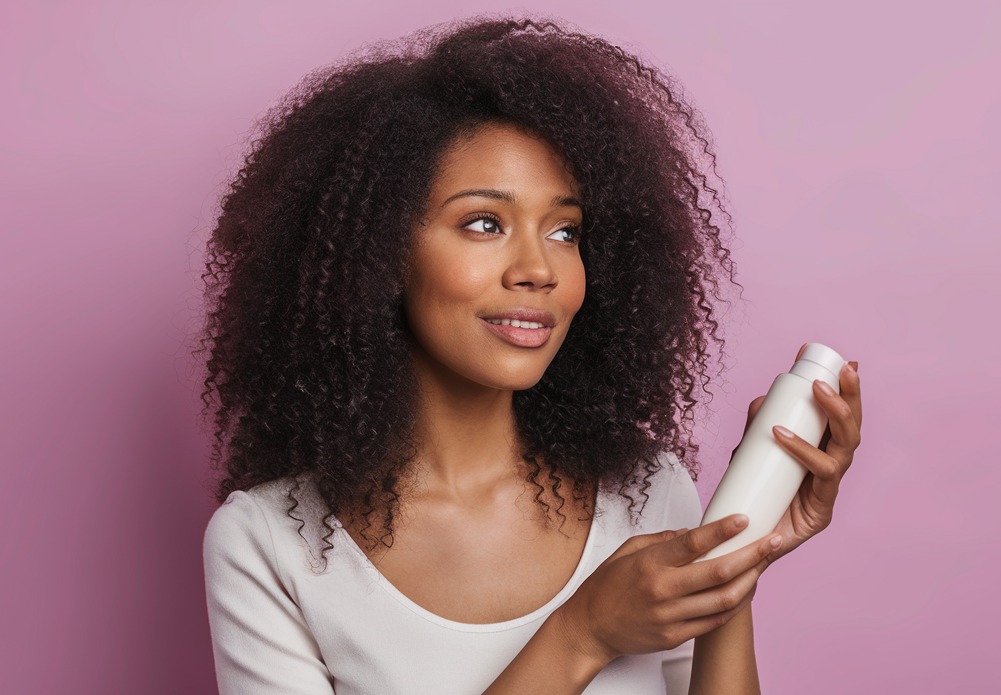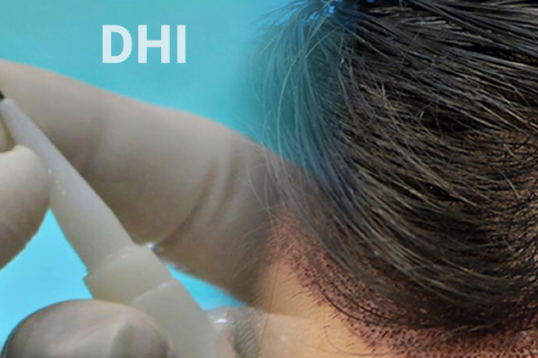Have you ever questioned why, even after hair washing, your Hair seems so flat and dull? What makes it stay frizzy, then? Here, using the right hair shampoo appropriate hair can change the situation.
It could all seem too much to handle, even with so many choices. Which kind of shampoo—hydrating, volumizing, or strengthening—should you pick? What about shampoo that is natural or devoid of sulfates? Each shampoo has a purpose; overusing it can leave Hair feeling coarse.
Let’s review all the facts you need about hair shampoo in this guide. We are here to help you select the appropriate ingredients and provide information about your hair type.
Now, let me go down the steps to choose the best hair shampoo for your hair type.
Why Choosing the Right Hair Shampoo Matters
Why does using pricey shampoos not make your scalp feel any less itchy? Now, let’s talk about selecting the right hair shampoo. It has the power to make or break your hairstyle.
If you use the wrong hair shampoo, you will have several issues. If your Hair feels dry and brittle, it is likely because your shampoo is robbing it of essential oils. At the same time, if you use a shampoo with a thick texture, your Hair will look greasy and lifeless. This could be because the shampoo has been made with strong chemicals or perfumes that cause skin rashes.
Finding the correct Routine Shampoo can dramatically change your Hair’s health. By choosing one that fits your hair type and requirements, you can improve the scalp’s health and make Hair fuller and more moist. A balancing shampoo is ideal for oily Hair, as it eliminates greasiness while preserving moisture. Dry Hair can get the moisture it needs from a moisturising shampoo. Shampoo for fine hair adds volume, strengthens strands, and won’t weigh hair down. These products are particularly effective at calming sensitive scalps and diminishing inflammation.
Choosing the right hair shampoo is crucial because it forms the foundation of your hair care routine. It prepares your Hair for styling and treatment, ensuring you get the best results from all your hair products.
Identifying Your Hair Type

How can one determine one’s hair type? First, one should learn about the kind of Hair and the problems that could most affect it. Here are some tips for determining your hair type:
Texture
- Fine/Thin Hair: The strands are fragile in size, may have a smooth, silky texture felt on the palm.
- Medium Hair: Strand thickness is between fine and thick Hair.
- Coarse/Thick Hair: refers to big hair strands; in terms of their diameter, they will feel like wires.
Porosity
- Subtle Pore Density: Hair is low in porosity, meaning it does not readily soak up moisture or products, and these are inclined to remain on the hair surface.
- Normal Hair Moisture: Hair has an optimum level of porousness, which enables it to soak up moisture.
- High Porosity: Hair retains moisture well, but at the same time, it sheds off easily, leaving Hair dry.
Density
- Fine Hair Density: Hair is straight and fragile with a thin texture – the scalp is visible.
- Medium Hair Density: Hair looks thicker than in the low hair density category but not as thin as in low hair density.
- Thick Hair Density: A lot of Hair is produced to cover most of the scalp, so it might be hard to see the skin.
Curl Pattern
- Wavy: Hair with a loose ‘S’ shaped strand pattern.
- Curly: Hair that defines an “S” shaped curl pattern.
- Coily: Hair with a tight spiral curl pattern, often forming tight coils.
Hair type can be identified from the genetics of the hair strands and the pattern of curls it forms. It is essential to understand your hair type so you can be well-equipped with the right products, such as shampoos, conditioners and other products you need for your Hair.
Know if your hair is oily, dry, or combination to choose the right shampoo.
Know Your Hair Type for Hair Shampoo

Certainly! Below are some ways you can manage or deal with the following hair types:
1. Dehydrated and Dry Hair:
2. Dull or lifeless Hair:
3. Weak or thin Hair:
4. Rough Hair or Frizzy Hair:
5. Flaky or dandruff scalp:
6. Hair Color-Treated Fading:
7. Damage or harm to Hair: Damage or harm to Hair:
These are some useful tips to help you select a hair shampoo and create a hair care routine to address particular issues like dandruff, fading color, or hair loss.
Washing your hair too often can strip it of natural oils, leading to dryness and damage. Aim for 2-3 times a week depending on your hair type.
What ingredients should you look for in hair shampoo?
The ingredients are essential when choosing a hair shampoo. The right products can go a long way in maintaining your Hair’s health and beauty.
- Moisturizing Ingredients: Include argan oil, coconut oil, and shea butter. These ingredients afford maximum moisture, making your Hair smooth and easy to comb. They help restore moisture, especially in dry or damaged Hair.
- Strengthening Ingredients: Great proteins include keratin and biotin. They fortify Hair from within, minimizing breakage while enhancing growth. Keratin assists in reconstructing hair architecture, while biotin strengthens Hair’s general health and volume.
- Scalp Soothers: Tea tree oil and peppermint are calming. These ingredients aid in soothing an irritated scalp, combating dandruff, and providing a tingling sensation. Tea tree oil has antifungal and antibacterial properties, while peppermint oil promotes blood circulation in the scalp.
Avoid sulfates and parabens. These can remove the natural oils from the Hair, causing Dryness and sometimes even itching. Sulfates are very harsh cleaning agents that are not suitable for most Hair, and parabens are preservatives that may lead to some problems in the long run. Selecting hair shampoos that do not contain these ingredients helps promote a better and healthier way to wash your Hair and scalp.
Choosing the right hair shampoo offers numerous benefits

Selecting a proper hair shampoo is beneficial in many ways
- Improved Hair Health: Using an appropriate shampoo can treat hair problems, such as oily or damaged hair, thus enhancing overall health.
- Enhanced Appearance: Using the right shampoo helps enhance the Hair’s feel, making it glittery, softer and easy to manage.
- Prevention of Hair Issues: The right shampoo can help solve recurrent hair challenges, including dandruff, split ends, and breakage.
- Optimal Scalp Health: A good shampoo does not harm the scalp and its pH level and does not result in an irritated scalp.
- Long-Term Hair Care: This method allows you to correctly treat and manage your hair, reducing the possibility of damage and encouraging hair strength.
It seems incredible, but deciding which shampoo to use is crucial in achieving beautiful, silky Hair.
What does pH-balanced hair shampoo do?
A balanced pH in hair shampoo is crucial for several reasons: A balanced pH in hair shampoo is vital for several reasons:
- Prevents Dryness: It also assists in maintaining the Hair’s natural level of acidity to avoid drying the strands. This will help keep the Hair moist and prevent it from getting brittle, which leads to frizz.
- Maintains Scalp Health: That is why the scalp has an average pH level that fluctuates between 4 and 5. which is slightly acidic. A shampoo with the same pH as one’s Hair assists in avoiding disruption of the outer layer of the human skin. This cuts irritation, itching, and sensitivity to the minimum, giving the scalp a much healthier condition.
- Enhances Shine: Appropriate pH balance is crucial within shampoo to improve the cuticle’s surface smoothness of hairs. If the cuticle is smooth, the light is reflected evenly from the Hairhair, providing an appropriate sheen and lustre. This is because it makes the Hair look better and healthier than it was before.
Selecting the right hair shampoo with a moderately acidic pH of 5.5 or less cleanses the Hair well, moisturizes it, balances the scalp’s pH, and provides improved hair texture.
How to Use Hair Shampoo Effectively
Proper use of hair shampoo is essential for enhanced hair hygiene and health.
Wet your Hair first with warm water before using the shampoo. This makes it easier to open the hair cuticles and prepare them for cleaning.
Apply a coin-sized shampoo to your hand. If you rub it like that, washing your Hair should suffice without needing more product, which may cause product buildup.
Rub the shampoo into your scalp with your fingertips using circular movements. If possible, avoid applying pressure to the hair shaft but rather to the scalp where the Hair grows. This aids in the circulation of blood in the head region, thus improving the health of the scalp while at the same time ensuring even application of the shampoo.
Lastly, wash your Hair with regular tap water after massaging it. Only rinse it with water if all the shampoo is washed off and the water is clear. Deposition causes Hair to feel heavy and look lifeless.
By following these steps, you can ensure you’re shampooing properly without clogging your Hair with unnecessary products.
Always use a conditioner to keep your hair moisturized and manageable.
Hair Shampoo and Hair Care Regimen
It must be noted that washing Hair is not the only process involved in hair care. Here’s how to effectively incorporate hair shampoo and conditioner into your routine:
- Condition: Remember to use a conditioner after washing your Hair with shampoo. Conditioners assist in replacing some of the moisture and nutrients washed off by the shampoos, making your Hair easy to manage.
- Mask: Include a hair mask in your hair regimen once a week. Hair masks provide additional nourishment, work to repair damage, improve the structure of hair strands, and promote hair vitality.
- Protect: Use a heat protectant product before styling with heat devices like blow dryers or straighteners. This creates a layer that protects your Hair from excessive heat, preserving its texture and minimizing hair breakage.
Following these steps ensures that the Hair is washed, fed, and coated in a way that will keep it healthy, shiny, and easily manageable for prolonged periods.
Expert Tips on Choosing the Best Hair Shampoo
- Patch Test: Forever do a patch test before fully embracing a new shampoo into your hair regimen. To do this, take a small quantity of the shampoo you intend to use and test it on your skin, particularly the inner folds of your elbow.
- Rotate Shampoos: Using only the same shampoo repeatedly without a break is notable. Use different shampoos and change them occasionally to avoid buildup due to seasonal changes.
- Listen to Your Hair: Observe the Hair’s reactions to the shampoos used. This should be done depending on various factors such as weather, hair type, or specific problems like Dryness or oily Hair.
By considering these expert tips, you can choose the best hair shampoo that provides proper cleansing and promotes overall hair health in the future.
If you swim frequently, look for a shampoo that removes chlorine and salt water.If you swim frequently, look for a shampoo that removes chlorine and salt water.
Conclusion
The choice of hair shampoo plays a significant role in determining the kind of Hair one will have. Through basic knowledge of hair types, selecting appropriate ingredients, and considering specific hair problems, hair health can be improved, and hair quality can be optimally enhanced.
Not only do shampoos help cleanse, but they also condition, protect, and can meet specific needs such as Dryness or hair loss. In conclusion, choosing the proper hair shampoo provides long-term solutions for Hair maintenance, keeping it healthy, beautiful, and resistant to any challenges it has to face throughout the day or due to environmental impacts.
FAQs
How can I know the type of Hair that I have?
Classify your hair type based on its texture, thickness, and traits, such as oily or dry Hair.
What features should I consider in the shampoo for the oily hair type?
Choose cleansers with active ingredients such as salicylic acid or tea tree that can reduce sebum secretion without stripping the skin on the head.
Which ingredients are suitable for dry Hair?
To condition dry Hair without making it greasy, search for products containing argan oil, shea butter, or coconut oil.
Is it okay to use the same shampoo for coloured or chemically treated Hair?
It’s best to use shampoos formulated explicitly for coloured or chemically treated hair. These shampoos are designed to be gentle, protect the hair colour, and provide the extra moisture and care that chemically treated hair often needs. Regular shampoos may contain harsh ingredients that can strip colour and cause further damage to chemically treated hair.
What is the significance of pH level in shampoo?
With a normal scalp pH of about 4. 5-5. 5, the shampoos should ideally have a similar pH to avoid drying and irritating the scalp while preserving hair health.
Can natural or organic hair shampoos for any hair type?
Natural and organic shampoos are suitable for all types of Hair. Choose the ones with added ingredients such as aloe, essential oils, or plant extracts that address your hair issues.
What ingredients should I avoid in shampoos?
It is essential not to use shampoos that contain sulfates, such as sodium lauryl sulfate and parabens, as they remove the natural oils of the Hair and scalp, leading to dry and itchy Hair.
Do you have to use the same brand of hair shampoo and hair conditioner?
It is not a rule to use shampoo and conditioner from the same company, but when you do, you are most likely to get the best results for your Hair because they are made for each other.
Do Shampoos Make Your Hair Grow Faster?
Some shampoos incorporate biotin, caffeine or essential oils that are good for hair growth since they help the scalp and blood circulation. If this is a consideration, try to find shampoos targeting hair growth.

